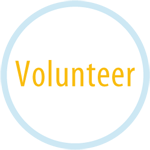Apply for a grant
Thank you for your interest in applying to our organization for research funding. Our 2016 Portland Summit continues to inform us on our RFP's as to likely avenues to pursue and relative priorities (See Summit Summary). If you are instead interested in a small grant that may not be tied to a specific research project, refer to our Flex Grant Program. Please note that in most cases our Scientific Advisory Board is unable to provide personalized feedback on individual proposals.
Step 1:
Contact Friends by e-mail () to discuss the scope of the grant and whether we are able to support the study. This conversation will reduce the need to later write a separate letter of intent, and will speed up the grant writing process. Initially, sending a very brief overview of your project will get things started.
If this is your first time interacting with our organization:
1) We'll ask for your background as well as the background of key personnel in your laboratory. We'll keep this information on file for your future applications, and keep track of your publications.
2) You need to review our contract template and check with your institution that you are able to accept money from us. We realize that virtually every institution will want to change a few words, but in general the contract should be acceptable for your institution.
3) You need to be ready to start if you get the grant. Once the grant is accepted, your institute will have two weeks to initiate the contract and progress reports will follow every 6 months. Timely submittal of these reports is tied both to continued funding and future consideration of grant requests.
Step 2:
Review your timing. Our scientific advisory board meets once or twice annually (depending on available budget) to discuss research priorities, project updates, and new proposals. Specific dates for each RFP will be emailed in a general announcement and posted on social media. Use the above email address to request addition to the mailing list.
Step 3:
Submit your grant to the same email address specified above by 11:59pm Seattle Time on the day of the deadline, preferably as a single PDF document. Use at least 12pt font size and at least 0.75" (19mm) margins. Always append a biosketch, and any new investigator or junior investigator must include a letter of support from an appropriate person. If you are relying on resources external to your own, personal lab (i.e., not that of an associate or mentor), letters of support must be included from those labs/departments/companies. If you need to modify your proposal after having submitted it, then just submit it again, noting that you have made a correction. Again, by the deadline. There are 6 sections you will need in your proposal:
- Information Page (Important!)
- Date of application
- Applicant's name
- Email address of applicant
- Title of research project (this will be used on our website)
- Institution where study has been approved to be conducted
- Address to which funds are to be sent (only add if you really want funding)
- How funding check is to be addressed or detailed wire instructions (again, only necessary if you expect funds to be sent). Note that for grants outside the US we only wire funds.
- Number of years and budget/year (grants are typically 1-2 years in length, but we have funded 1 day travel grants, long term multi-year grants, and everything in-between)
- Introduction
Please note that there is no need to go into elaborate description of FSHD, only state what is important to your proposal.
Recommended 1 page. - Specific aims and deliverables
A specific aim should represent about a year of work, and a deliverable should represent about 6 months to align with short progress reports.
Recommended 1 page. - Budget
Friends does not provide indirect funds. Supplies should be pertinent to the proposed project. Include in the budget a very short description of the capacity of the lab to carry out the work.
Recommended 1 page. - Research plan
Include a succinct description of preliminary data and the logic of the project. Describe the experiments to be done in sufficient detail and explain how they relate to milestones and deliverables.
Recommended 3 pages maximum. - Lay description
Upon funding, your lay project description will be used online to describe the work. Some effort at detail is useful to engender continued support from our donors.
If you feel there is additional material needed, feel free to append this after the required sections, including references, etc.





Connect with us on social media